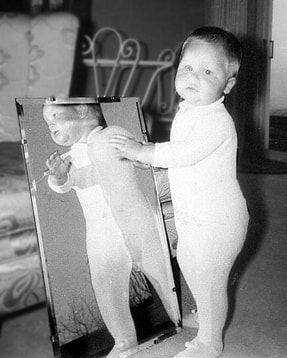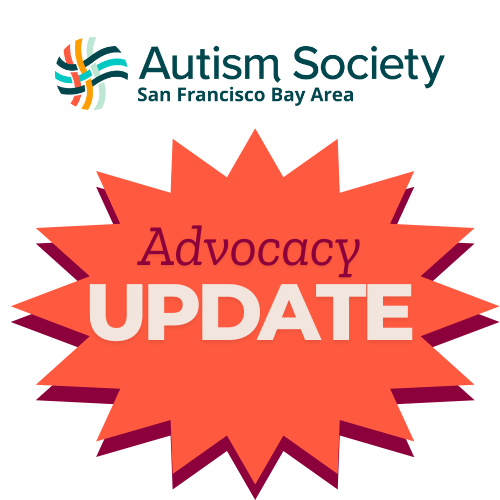One of the Bay Area’s earliest autism moms offers her perspective on California’s autism explosion
A new paper looking at autism prevalence in California tells us what we old-timers already know: autism rates here have increased almost exponentially over the past several decades.(1)
Yet to this day, some academics suggest that the autism increase doesn’t exist.(2) These doubters question the consistency of data collection and point to greater skill on the part of diagnosticians, as well as to broadening of diagnostic criteria. A few even blame the victim, implying that grasping parents may seek the ASD label to obtain trendy services for their more typically functioning offspring, or that professionals may profit by jumping on the autism bandwagon. Who ever dreamed autism would have such cachet?
Doubters of the increase seem to accuse believers of some form of delusion, maintaining either that (a) there are really fewer children on the spectrum than people claim, and we are over-labeling milder disorders, or (b) there have always been huge numbers of children on the spectrum who went all but unnoticed until recently. Pick your fallacy.
While Nero fiddles and academics bicker, one thing is beyond dispute: agencies are increasingly hard-pressed to meet the immense needs of the rapidly growing caseloads of disabled young adults, and special ed classes overflow with ASD children, where just a few decades ago only a handful were seen. Families are growing desperate for lifespan services, and housing demand massively exceeds supply.
As the parent of a 55-year-old son with autism (who still lives at home, with me), and as someone who has been an active autism advocate for nearly five decades, I am puzzled. If there has really been no increase over the last 55 years, then there must have been an equally large percentage of children on the spectrum when John was little. How could it be that I never encountered them? As a youngster, John was memorable in any setting. Were all the others so well behaved, so very mildly disabled, that no one noticed? John as a toddler. Back in the 1960s, there were only a handful of other children in our entire county with impairments like his.John was born in 1963, likely part of an autism blip resulting from an outbreak of German measles.(3) When he was finally diagnosed at age six, conventional wisdom counted 4:10,000 (1:2,500) with the autism label,(4) a far cry from the 1:59 which the CDC cites today.(5) What accounts for the immense discrepancy between then and now?
All I know for sure is that John’s history is that of a little boy very much alone with his diagnosis. His San Mateo pediatrician had seen only one other case like John’s in 20 years of practice. It took six years and a succession of experts to award him with the autism label, with stops along the way for learning disabled, neurologically handicapped, emotionally disturbed, childhood schizophrenic, and “troubled” (this from a therapist who didn’t like labels, so invented his own). While John would now be considered classically autistic from an early age, his symptoms under any label were then extremely rare. We can certainly agree that diagnosis has improved since his childhood, but that cannot explain that in the 1960s clinicians seldom encountered these sorts of very striking abnormalities, whatever the category name.
In the community, no one knew what to make of John, or of his suspected “Refrigerator Mother,” as we were sometimes called. They had never seen anyone like him before. As a rapidly regressing preschooler, he desperately needed help. While no one knew what to do, everyone seemed to have firm opinions. A school psychologist blamed John’s total lack of social skills on Sunday school avoidance (though I fear even Jesus might have been hard pressed…). Well-meaning neighbors insisted that the neighborhood co-op would bring miracles of socialization; the actual result was to make him one of the earliest and most miserable victims of forced inclusion. (As parents know, inclusion can be wonderful when it’s done right. This wasn’t.)
| “While John would now be considered classically autistic from an early age, his symptoms under any label were then extremely rare. We can certainly agree that diagnosis has improved since his childhood, but that cannot explain that in the 1960s clinicians seldom encountered these sorts of very striking abnormalities, whatever the category name.” |
In the late 1960’s John was registered with the San Mateo school district, as required by law – not that he could attend, because public schools did not then have a legal mandate to serve children with autism. At the time, the San Mateo district was aware of only one other child with autism, as was also the case when we moved down the county to Menlo Park in 1973. (Note: San Mateo County now has about 1,000 cases of autism in the state Developmental Services system, comprising about one-fourth of the total developmental disability caseload in the county.)
Programs specifically designed for autism did not exist at the time of John’s diagnosis. The scattered children with autism were so few and far between that they had to squeeze into programs for other disabilities, or for the emotionally disturbed. Often the few children who did not fit into public school were farmed out to programs outside their districts, sometimes far from home or even out of state.

California DDS autism prevalence among 8 year-olds (purple), compared to 8 year-olds from the IDEA and ADDM networks. DDS prevalence, while still clearly growing since the 1980s, may be lower because it includes only the more severe (developmental disability level) cases. Graph from Nevison et al 2018.
In fact, the first Autism Society of America (ASA) chapter in San Mateo County could find so few members that we met jointly with parents of adult schizophrenics. We called ourselves PASCA, Parents of Adults with Schizophrenia and Children with Autism. We had little in common except that our scant funding came through Mental Health, though we did share the bond of being rare outcasts in neighborhoods full of “normal” families. At the time, some autism professionals considered those rare cases of autism to be a form of childhood schizophrenia, with meager research being reported in the Journal of Autism and Childhood Schizophrenia.
In the early days of our ASA chapter, we were desperate to get our children into the Regional Center system, where they could be treated as developmentally disabled rather than disturbed and could gain access to appropriate programs and services. Here again we were hampered by our small population. We early advocates besieging Sacramento tried to give legislators the impression that we were a much larger group and sometimes resorted to disguises, complete with wigs and quick wardrobe changes.
By the late 1970s autism was finally included in the Regional Center system. Even with its case-finding mandate, autism barely registered in the overall caseload. It was not until the late 1980s that we became aware of a significant autism increase. At that time California’s DDS saw an inexplicable surge in cases, prompting them in the late 1990s to review their growing caseloads for an explanation such as diagnostic shift (their review could not locate any sociological or diagnostic explanation for the increase). The Autism Research Institute also noted the start of a surprising rise in incidence.
Lurking in the background all this time was the DSM (Diagnostic and Statistical Manual of Mental Disorders). Revisions over the years have encompassed changing and often controversial views of autism, which some blame for the apparent increase in autism’s prevalence. But reports here in California of exploding prevalence have come mainly from agencies evaluating children under developmental disability criteria that have grown more stringent over time, not more generous. While the DSM can reshape the elusive boundaries of autism, in California our hard-core DD-level autism has grown from fewer than 2,000 when John was a boy to more than 105,000 today. DSM’s fluctuating definitions have prompted a lot of quibbling, but perhaps the most compelling evidence for an autism increase comes from the rapidly expanding, often desperate, need for services from the unquestionably expanding population of young adults who are too mentally disabled to care for themselves.
Has increased awareness created the illusion of an autism surge? I simply cannot imagine that there were tens of thousands of children with autism who were undiagnosed or misdiagnosed over decades. If such a huge population had existed, they surely would have been conspicuous enough to attract attention, at least if they were anything at all like John. Physicians encountered so few patients with autism traits that our ASA chapter actively tried to promote physician awareness by papering doctors’ offices with homemade flyers entitled, “Your Next Patient Has Autism.”
Yes, in John’s lifetime diagnosis has improved, diagnostic criteria have broadened, and diagnostic methodologies continue to evolve. But this progress cannot explain the supposed missing masses of children whom we somehow failed to detect under our noses half a century ago. If the incidence were really the same then as now, John’s childhood must have been populated with phantom children whom we never saw. The clinicians never saw. The teachers never saw. The neighborhoods never saw. The Regional Centers never saw. There is no documentation anywhere to suggest the existence of these shadow children, except in the minds of some academics.
I almost wish they had actually existed. Maybe John would have found at least one playmate.
(1) Nevison C. et al. California Autism Prevalence Trends from 1931 to 2014 and Comparison to National ASD Data from IDEA and ADDM. J Autism Dev Disord. 2018. July 5.
(2) See, for example, Fombonne, E. The rising prevalence of autism. J Child Psych. and Psychiatry 2018;59:7,717-720.
(3) See, for example, Chess S. Autism in children with congenital rubella, J Autism and Childhood Schizophrenia1971;1(1):33-47. Also discussed in the 1970’s in The Advocate, the newsletter of the National Society for Autistic Children (NSAC). NSAC was the predecessor of ASA but served only school-age children and their families, since there were few known adults with autism at the time.
(4) See, for example, Fombonne, E. Is there an epidemic of autism? Pediatrics 2001;107:411–412. Also reported by NSAC. Research was scarce at the time, since autism was not considered statistically significant enough to warrant funding.
(5) Biao J, et al. Prevalence of Autism Spectrum Disorder Among Children Aged 8 Years — Autism and Developmental Disabilities Monitoring Network, 11 Sites, United States, 2014. Surveillance Summaries / April 27, 2018 / 67(6);1–23. This surveillance study identified 1 in 59 children (1 in 37 boys and 1 in 151 girls) as having autism spectrum disorder.
Disclaimer: The opinions and assertions stated in the SFASA blog are those of the individual authors, may not reflect the opinions or beliefs of SFASA, and do not reflect the opinions of the Autism Society of America. SFASA is an independent affiliate of the Autism Society of America, the leading grassroots autism organization.
SFASA wishes to stress that vaccines have not contributed to the explosive growth in autism or other neurodevelopmental disorders.







